How to Pick the Right Garden Ceiling
You’re sitting in your garden. You look up. What do you see? Robin’s egg–blue sky and cotton ball clouds? A leafy canopy shimmering in a breeze? Perhaps it’s an umbrella, a gazebo or a rose-covered trellis.
Every part of your garden has a ceiling, even if it’s the sky above. Now this may come off a bit “gloaty,” but when an architect chooses a ceiling inside your house, it's pretty simple: He or she selects from wood paneling, plaster, acoustical tile or maybe a skylight. But garden designers have a more robust array of useful and decorative choices that can be grown, assembled or constructed.
The main purpose of a home’s ceiling is to keep out the elements and prevent the people sleeping upstairs from falling through to the living room below. But a garden’s ceiling can do so much more.
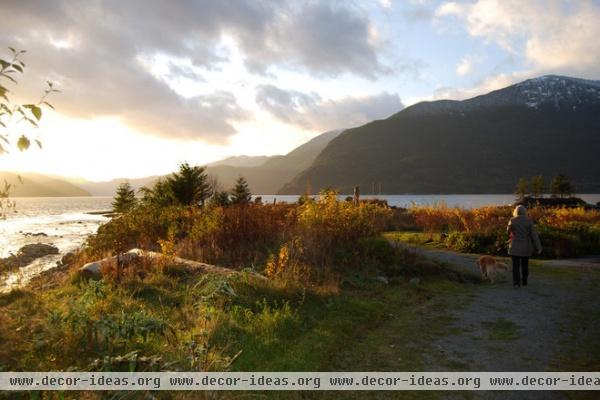
Think About Growing It
The first thing that pops into most garden owners’ heads when they think about adding something between them and the heavens is shade. Even the most ardent sun worshipper needs a break from the rays once in a while. And with people becoming more conscientious about avoiding excessive exposure to ultraviolet rays, garden ceilings make good sense, healthwise. A bit of cloud cover is a welcome treat on a hot day, but most of us lack the influence with Mother Nature to summon the clouds when needed.
That’s where trees play an important role. Aside from their natural beauty and graceful movement, they can cool the ground below (and your afternoon guests) by as much as 15 degrees. If your garden already has mature trees that cast shade where you need it, you’re in luck. If not, consider whether you can move your outdoor dining or reading room into that welcoming pool of shadow.
In my design work, I sometimes use garden ceilings to set the mood by creating a feeling of enclosure and defining spaces within a larger area. Unlike with walls or hedges, the outward views are preserved.
Houzz guides to great trees for your landscape
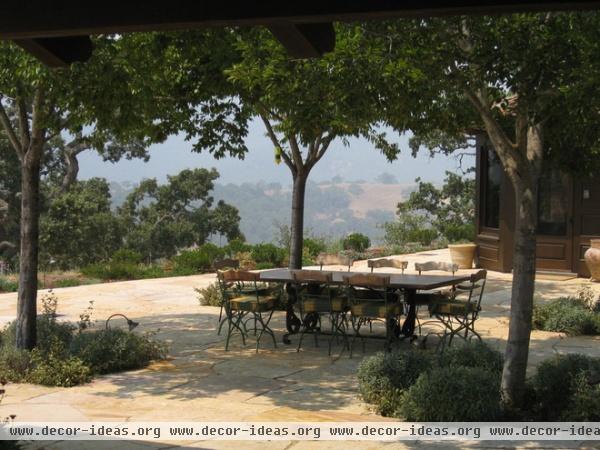
What about starting a new tree from a container or bare root? That can take some time. Caecilius Statius, a Roman poet in the third century B.C., reminded us, “He plants trees to benefit another generation.” While it’s not likely you’ll crank up your time machine and ask the previous owners to get a tree started for you, you should seriously consider the tree’s speed of growth. The double-edged sword that comes with planting fast-growing species is that some don’t know when to stop and are often short-lived. But if the budget allows, large trees can be purchased and planted, usually with the aid of a long-reach crane.
If you do decide to plant a tree or three, a primary consideration is whether the plant loses its leaves in the winter or remains evergreen. Your garden will be welcoming through more seasons if the tree sheds its leaves and allows warming light to reach you on a cool day. But be prepared for some autumn raking, and add those leaves to your compost pile for an extra benefit.
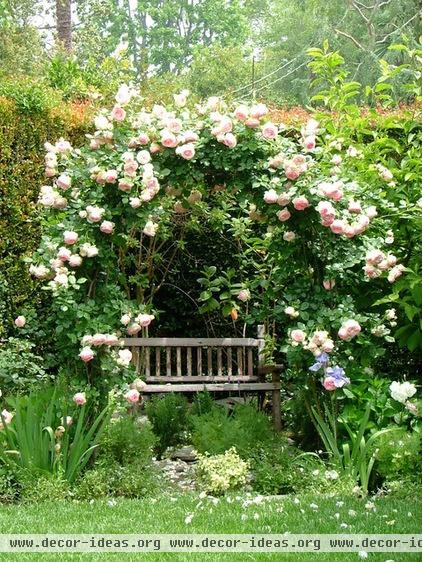
You may be thinking, “A mature tree would be out of scale for my garden.” That’s reasonable; however, sometimes you can provide shade just where you need it. For instance, by constructing a simple rose arbor over a rustic bench, you’d block the sun while adding a sense of intimacy. The width of the canopy and orientation of the sitting area will dictate how much shade is cast and at what time of the day.
Selecting the right plant for the right place takes some horticultural savvy, since you’ll need to match the growing needs of the vine to the garden’s soil and light. Another thing to keep in mind is that plants do not have off switches, so anticipating the mature size of a plant properly could save you hours of chores. Vines like honeysuckle might delight your nose but can become a rampant nuisance over time. Check with a knowledgeable nursery employee before buying.
With all of the ceiling materials in this ideabook, you'll need to address the reality that not only does the sun move across the sky every day, but its position changes throughout the year. Winter sun rises in the southeast, sets in the southwest and traverses low in the sky. That means that if a canopy or roofline extends too far beyond where you're sitting, you might never feel the sun's warming rays. In summer the sun rises and sets farther north and tracks almost overhead. Consider these patterns when you plan your shade strategy.
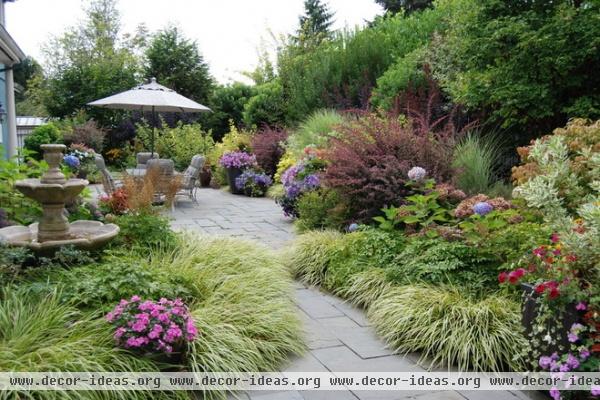
Think About Portability
I’m dating myself here, but one of my favorite Lovin’ Spoonful lyrics from the '60s went, “You and me and rain on the roof, caught up in a summer shower.” In rainy parts of the country, there are few things more delightful than sitting high and dry while hearing the pitter-pat of a light rain cleansing the garden. It’ll take more than a leafy tree or vine to accomplish that.
On the street we carry an umbrella, and the same approach can be employed in the garden. That's the flip side of any shade structure: It not only shelters from the sun, but it allows you to enjoy the outdoors on a drizzly or rainy day.
Portable umbrellas come in all sorts of designer colors and patterns, and can serve you for many years. The canvas fabrics of the past have been replaced by long-lasting synthetic materials like Sunbrella. Patio umbrellas can be inserted through the center of a table or supported by a portable plate on the ground — some bases are weighted with sand or water but come with wheels for easy relocation.
Choose the right patio umbrella for you
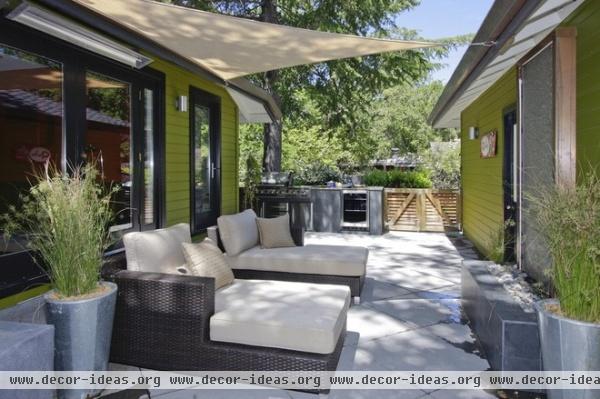
Think About Safety and Longevity
Umbrellas are handy, but even the larger ones have their limits when it comes to shading a large deck or terrace. That’s where shade sails and shade-cloth structures come in. The woven fabrics are long lasting and moisture resistant, and can block up to 90 percent of harmful rays. They are available in ready-made triangular panels or can be custom designed and installed by companies specializing in tensioned fabric structures. The color range is impressive, from simple white and light tints to bold, saturated colors. The quality of these fabrics can vary greatly, so do your research and, if possible, visit an installation where they’ve been in use for a while.
Small, prefabricated sails can be attached to eaves, existing structures or poles (please don’t drill eye screws into your trees!), but larger ones will require a bit of structural engineering to assure stability when the wind pick up.
A big advantage of smaller sail shades is that they can be put up and taken down without too much effort as weather conditions change. And if one doesn’t quite do the trick, several can be overlapped, creating interesting patterns.
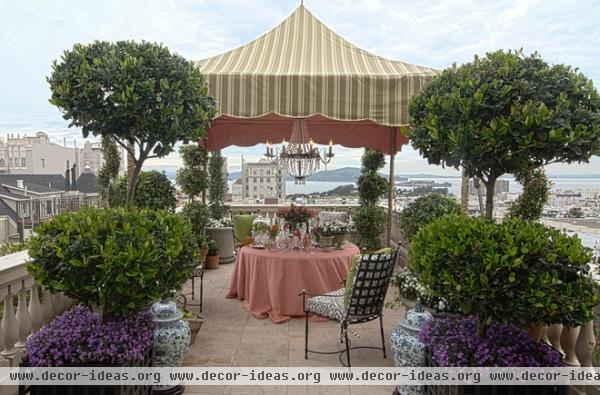
You don’t have to be a circus performer to appreciate the convenience of a tent for easy, inexpensive, portable coverage. These light and airy garden structures come in all shapes and sizes, and are sold as kits you can assemble in a few hours using simple tools. The frames are lightweight and, like modern umbrellas, they feature durable fabrics, making your purchase a smart long-term investment. Some feature side panels that can be opened for air circulation or closed for a romantic escape.
Tip: For safety’s sake, garden tents need to be well anchored in breezy or windy locations. (It’s so embarrassing to call over the fence, “Hey, mister, can we have our tent back?”) Methods for keeping a tent where you want it vary by model and can include stakes with tie-downs, spikes, concrete “feet” or sandbags. If you know that your tent will be a permanent feature, you can connect to below-ground concrete footings.
Also, keep in mind that even the most durable fabrics can eventually succumb to the elements. If you’re purchasing a tent from a kit, it pays to buy from an established company that is more likely to be around when you need them — that is, when you're in need of replacement fabric some years down the road,
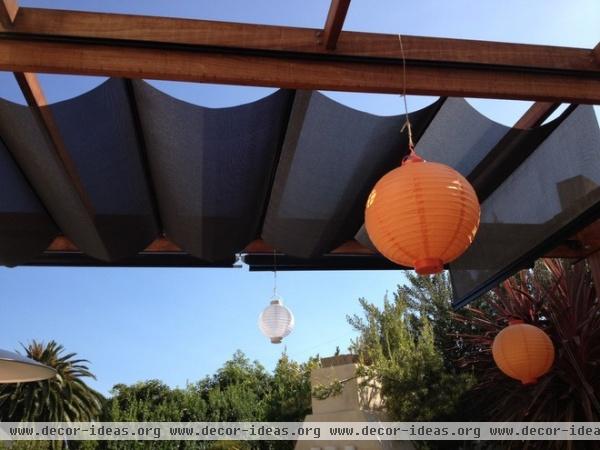
If you are looking for a more durable, permanent structure but like the convenience of changing the amount of shade in your yard, a retractable shade cloth might be your best bet. There are lots of ways to configure this type of ceiling, but at its core there’s a frame (either freestanding or attached to a building), cables or metal rods for the cloth to run along, panels of shade cloth with grommets or rings that allow it to slide, and cords for extending or retracting the cloth — like drapes, but horizontal.
The beauty of this approach is that the framework can assume any architectural style to harmonize with your house, ranging from rustic ironwork to stone pillars to classic columns or stained wood. Similar to shade sails, the color and pattern palette for shade cloths is quite broad. But unlike trees, umbrellas and tents, these structures require building permits in most jurisdictions, meaning you’ll need to join forces with an architect, landscape architect or garden designer teamed with a structural engineer.
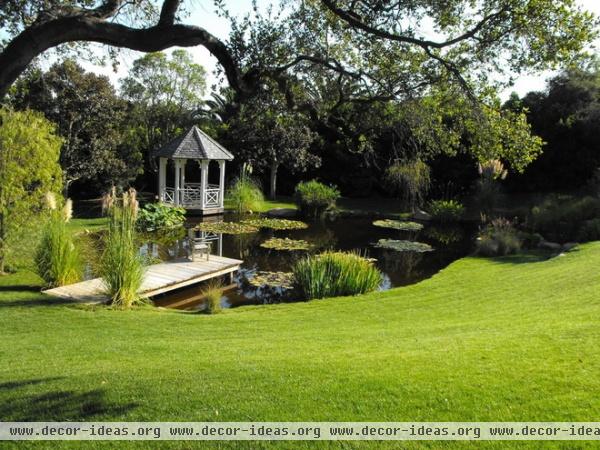
Think About Permanence
Say “gazebo” and it’s hard not to imagine a relaxed weekend afternoon and a frosty pitcher of lemonade on a summer day. Gazebos not only serve a useful purpose for entertaining — or just getting lost in a good book — but when thoughtfully sited, they can become the focal point of your garden. The classic garden gazebos are six- or eight-sided pavilions with wood floors and shingled roofs supported on columns. If that doesn’t suit your style, there are exotic versions conjuring up a Balinese getaway and pared-down contemporary structures. Gazebos can be outfitted with screens to keep bugs at bay or solid windows (but that sort of flies in the face of outdoor living, in my book).
If there might be a gazebo in your future, you can choose from a kit or work with an architect to custom design the right structure for your vision. Regardless of which route you take, remember that form follows function. That means deciding how the space will be used so you can determine the right size — a cozy space for peaceful meditation or the social hub of the garden where friends can gather. The surest way to get this critical detail right is to actually arrange the furnishings you expect to use and then leave extra space for moving around within the footprint.
More in this series: How to pick your garden wall | How to pick your garden floor












